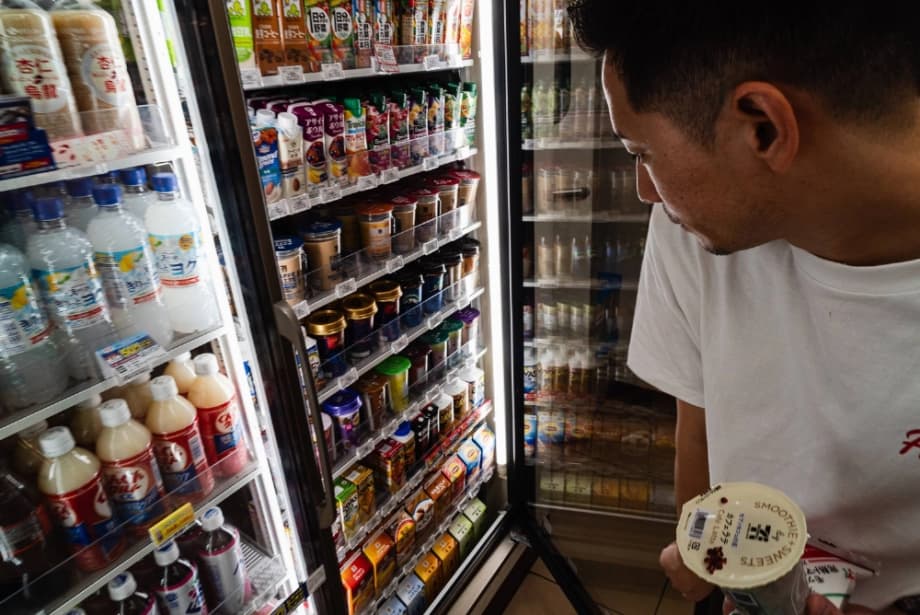Inside Tokyos most unlikely tour
Outside Tokyo’s busy Yoyogi Station, a small group clusters around guide Ryo Ito before setting off on a walk that looks more like a snack run than a city tour. The landmarks are not shrines or gardens. They are FamilyMart, 7 Eleven and Lawson, the big three convenience stores that the Japanese call konbini (convenience stores). What sounds like a novelty is, for many visitors, a revealing look at how daily life works in Japan, from breakfast onigiri to late night bill payments, all under bright lights and scrupulously clean floors.
- Inside Tokyos most unlikely tour
- Why Japans convenience stores feel like small city halls
- What happens on a konbini tour
- Social media turns snack runs into travel goals
- The big three chains and what to try
- Beyond snacks, services travelers actually use
- Etiquette, safety and smart shopping tips
- How tours affect neighborhoods and retailers
- Planning your own konbini crawl
- What to Know
Ito leads guests through narrow aisles and refrigerated cases with the same energy a museum guide brings to a blockbuster exhibition. He points out why shoppers argue about which chain does what best. Lawson for desserts and baked goods. 7 Eleven for soft, crustless sandwiches and salads. FamilyMart for the beloved famichiki fried chicken and a deep selection of rice balls. Along the way, he explains how to read labels, where to find seasonal items, and which stores have microwaves or small seating areas.
Before the first taste test, Ito stresses what the tour is really about. He introduces the group to konbini etiquette and then invites them to compare notes on flavors they grew up with and those they have never seen before.
He puts it this way:
“When I’m doing this tour, I’m really having fun with the guests. It’s not only about the convenience store, we also can exchange cultures through the convenience store experience.”
Why Japans convenience stores feel like small city halls
Konbini are everywhere in Japan and most are open 24 hours. They carry a lot more than snacks and bottled tea. For travelers, they function like mini service centers. ATMs, often capable of accepting foreign bank cards, sit near ticket machines that handle concert seats and museum passes. Multi function copiers allow printing and scanning of boarding passes or travel documents. Some locations accept parcel drop off and pickup and sell transit card top ups. Many offer free wifi, hot water for instant ramen, coffee machines, and clean restrooms. Staff keep lines moving and shelves full, even in the rush around lunch and late evening.
On the food side, quality and freshness are the calling cards. The core items read like a fast tour of Japanese comfort food. Onigiri rice balls that crackle with crisp seaweed when opened. Bento lunch boxes with rice, pickles, and rotating mains like karaage, hamburger steak, or salmon. Egg salad sandwiches on pillowy milk bread, fruit and cream sandos, salads with sesame dressing, and steamed buns in warming cases. In cold months, many stores serve oden, a light broth with simmered fish cakes and daikon. Packaging is precise, from onigiri wrappers that keep seaweed away from rice until the last second to trays that separate sauces until you are ready to eat.
High product turnover is part of the system, which helps keep food fresh. New items rotate through frequently, with seasonal specials tied to holidays and regional flavors. Travelers quickly learn a few Japanese phrases to spot new releases or limited time stock, and many make a point of visiting several stores back to back to see what varies by location and chain.
What happens on a konbini tour
A typical tour lasts a couple of hours and covers three or four stores within a walkable area. Guides start with a short primer on how konbini are organized. Drinks along the outer walls, snacks and prepared meals in the center, ice creams in the freezer cases. They show guests where to find hot water dispensers, microwaves, and the coffee machines that grind beans to order. Guests learn how to open classic items without mishaps, like the pull tabs on onigiri or the plastic collars that keep dressings away from salads until you toss them in.
Sampling is part of the fun. Guides might suggest a theme for each stop, such as a rice ball comparison at FamilyMart, a sandwich and dessert pairing at Lawson, and a salad or smoothie with a baked good at 7 Eleven. There is also a quick lesson in etiquette. Do not block narrow aisles with big bags. Ask before filming inside a store. If there is no seating area, take food outside and find a discreet spot, then carry trash to a bin inside the store or to your lodging if necessary. The idea is to enjoy the novelty without making life harder for staff and regulars.
Social media turns snack runs into travel goals
Short video platforms have pushed konbini culture into feeds across the world. Viral taste tests of egg sandwiches, puddings, fruit sando, and matcha drinks have turned convenience stores into a first stop after landing. In recent months, searches for 7 Eleven in Japan spiked by thousands of percent, a sign that travelers are planning visits to these stores in the same way they plan trips to famous crossings or temples. A recent travel trends report from a major airline brand labeled this urge to seek very specific foods as taste hunting, and it has become a strong driver of booking decisions.
Tour operators responded. Food platforms now sell guided convenience store walks that go beyond the items everyone has seen online. The pitch is simple: show guests the lesser known products, seasonal specials, and regional quirks that get lost in viral loops, and explain the culture behind them. Many companies report double digit growth in food experiences and are adding supermarket or convenience store stops to neighborhood walks.
That shift mirrors a broader change in how people travel. Grocery stores and markets have become windows into local life that do not require reservations or big budgets. In Japan, where service culture prizes speed, order, and thoughtfulness, the everyday experience of buying a snack can feel like a cultural lesson.
The big three chains and what to try
Every chain stocks core items, yet each has strengths that tour guides love to highlight. Offerings can vary by neighborhood and season, so consider these as starting points rather than fixed rules.
7 Eleven
Sandwiches are the star. The egg salad sando is famous for a reason, and the strawberry and cream version draws fans too. Look for chilled salads, fruit cups, and yogurt that appeal to travelers chasing lighter options. Coffee is consistent and inexpensive, and some stores have machines that blend fresh smoothies. 7 Eleven branded ATMs often accept foreign cards, a big help if cash runs low. For dessert, try fluffy pancakes or layered puddings.
FamilyMart
FamilyMart is the home of famichiki fried chicken. It is juicy, inexpensive, and easy to eat on the go. In winter, the steamed bun case is a must, with pork buns, pizza flavored buns, and other rotating fillings. The chain also sells a version of famichiki tucked inside rice as an onigiri. Shelves carry plenty of snacks, from unusual chip flavors to gummies, and drinks range from canned coffee to fruit sodas. Many FamilyMart stores have solid selections of salads and prepared meals for hotel picnics.
Lawson
Sweet tooth guests gravitate to Lawson. The Premium Roll Cake is a favorite, and seasonal desserts appear often. Lawson’s MACHI cafe coffee brand has loyal fans who like its price and taste. Some neighborhoods feature Natural Lawson stores that skew toward salads, whole grain breads, and lower sugar options. If you spot Akuma onigiri, a savory rice ball with tempura flakes and seaweed seasoning, add it to your tasting list. Certain Lawson locations also handle ticketing for popular attractions.
Beyond the big three, travelers stumble into regional names with their own specialties. Mini Stop is known for seasonal soft serve cones. Daily Yamazaki bakes breads in house at some shops. Seico Mart in Hokkaido stocks local products. These small differences turn a casual stroll into a culinary scavenger hunt.
One helpful approach is to mix and match items chain by chain. Try a sweet at Lawson, a hot snack at FamilyMart, and a salad or sandwich at 7 Eleven, then compare notes. This gives a quick view of how each brand targets different cravings.
Beyond snacks, services travelers actually use
Konbini convenience extends to tasks that swallow time during a trip. Need a printout of a ticket or a scanned passport page for a hostel check in? Multi function machines handle it with step by step on screen instructions that include English at many locations. Event ticket machines can reserve seats for museums or concerts. Parcel counters often accept domestic shipments, useful if you want to send a suitcase to your next hotel. Prepaid cards for transit can be topped up at the register in many stores, and staff are used to helping visitors navigate payment options.
ATMs found inside many konbini withdraw cash from international networks, sometimes with lower fees than airport machines. Coffee machines brew to order, hot water dispensers help with cup noodles, and some stores offer small seating areas where it is fine to sit and eat. Not every branch will have every service, yet between a few nearby stores you can usually find what you need without hunting down a print shop or a ticket office across town.
Etiquette, safety and smart shopping tips
These stores are neighborhood anchors, and most customers are on quick stops. A few small courtesies keep things smooth for everyone and remove the need for staff to intervene. Tour guides build etiquette into their routes for this reason.
- Step aside when browsing popular shelves so others can pass.
- Avoid filming staff or other customers without permission. Some stores do not allow filming.
- Do not open food before paying. If a store lacks a seating area, eat outside discreetly and carry trash back inside to the bins near the registers.
- Use IC cards or cash. Credit acceptance varies by store and network.
- Ask staff to heat food if needed. Microwaves are often behind the counter.
- Try limited items you cannot find at home, but leave space for regulars by avoiding long photo sessions in narrow aisles.
- Visit outside peak lunch and commute times if you are in a group.
Guides often add cultural context while walking between stops, from how tidy public spaces stay without abundant street bins to the idea of hospitality that anticipates needs. Small talks like this help visitors understand why konbini work so well in busy cities.
How tours affect neighborhoods and retailers
Konbini tours spread visitor spending across more hours of the day and into residential districts, which benefits small businesses clustered around stations. Guests discover bakeries, noodle shops, and independent cafes near the same corners where konbini stand. That ripple effect is one reason tours that include convenience stores have grown fast alongside traditional food walks.
For retailers, tourism is steadying demand for some products and boosting interest in seasonal lines. The stores in turn make it easy for non Japanese speakers to shop by expanding English guidance on screens and packaging. Operators say the best practice is to keep groups small and routes flexible to avoid clogging aisles and to give priority to regular customers who rely on these stores for daily tasks.
Some tour companies coordinate with store managers in advance or steer guests to less busy branches. That kind of planning keeps the experience pleasant for staff and shoppers while giving visitors the deeper cultural look they want.
Planning your own konbini crawl
You can build a self guided tasting in any major neighborhood. Pick three stores within a 10 to 15 minute walk. At the first stop, choose a savory item like an onigiri or hot snack. At the second, pick a drink and a salad or sandwich. At the third, choose a dessert. Keep a simple scorecard on your phone, noting taste, texture, and packaging. Rotate chains to see how each one shines.
Try to include at least one seasonal or region specific product, which might be marked by colors or signs at eye level. If you are traveling with friends, split items so you taste a wider range. Bring a small tote bag and hand wipes. If you need cash or printing, fold those tasks into your route. By the end, you will have filled a passport of flavors and picked up practical skills for the rest of your trip.
What to Know
- Guided convenience store tours in Tokyo now stop at FamilyMart, 7 Eleven and Lawson to compare specialties and teach etiquette.
- Konbini offer far more than snacks, including ATMs that accept foreign cards, printing, parcel services, ticketing and transit card top ups.
- Social media has turned egg sandwiches, onigiri and desserts into viral stars, and food tours report fast growth as a result.
- 7 Eleven is a go to for sandwiches and salads, FamilyMart for famichiki and steamed buns, Lawson for desserts and MACHI cafe coffee.
- Seasonal and limited items rotate quickly across all chains, so explore more than one store to see what is new.
- Etiquette matters: avoid filming people without permission, do not block aisles, and use in store trash bins when available.
- Plan a simple three stop route to sample a savory item, a drink or salad, and a dessert while taking care of errands like cash withdrawal or printing.
- Small groups and off peak visits keep tours comfortable for staff, regular customers and fellow travelers.




